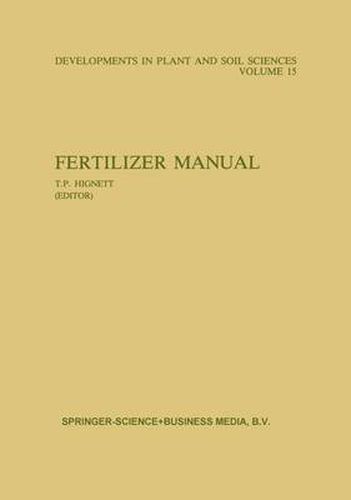Readings Newsletter
Become a Readings Member to make your shopping experience even easier.
Sign in or sign up for free!
You’re not far away from qualifying for FREE standard shipping within Australia
You’ve qualified for FREE standard shipping within Australia
The cart is loading…






This title is printed to order. This book may have been self-published. If so, we cannot guarantee the quality of the content. In the main most books will have gone through the editing process however some may not. We therefore suggest that you be aware of this before ordering this book. If in doubt check either the author or publisher’s details as we are unable to accept any returns unless they are faulty. Please contact us if you have any questions.
This Fertilizer Manual was prepared by the International Fertilizer Development Center (IFDC) as a joint project with the United Nations Industrial Development Organi zation (UNIDO). It is designed to replace the UN Fertilizer Manual published in 1967 and intended to be a reference source on fertilizer production technology and economics and fertilizer industry planning for developing countries. The aim of the new manual is to describe in clear, simple language all major fertilizer processes, their requirements, advan tages and disadvantages and to show illustrative examples of economic evaluations. The manual is organized in five parts. Part I deals with the history of fertilizers, world outlook, the role of fertilizers in agriculture, and raw materials and includes a glossary of fertilizer-related terms. Part II covers the production and transportation of ammonia and all important nitrogen fertilizers-liquids and solids. Part III deals with the characteristics of phosphate rock, production of sulfuric and phosphoric acid, and all important phosphate fertilizers, including nitrophosphates and ammonium phosphates. Part IV deals with potash fertilizers-ore mining and refining and chemical manufac ture; compound fertilizers; secondary and micronutrients; controlled-release fertilizers; and physical properties of fertilizers. Part V includes chapters on planning a fertilizer industry, pollution control, the economics of production of major fertilizer products anJ intermediates, and problems facing the world fertilizer industry.
$9.00 standard shipping within Australia
FREE standard shipping within Australia for orders over $100.00
Express & International shipping calculated at checkout
This title is printed to order. This book may have been self-published. If so, we cannot guarantee the quality of the content. In the main most books will have gone through the editing process however some may not. We therefore suggest that you be aware of this before ordering this book. If in doubt check either the author or publisher’s details as we are unable to accept any returns unless they are faulty. Please contact us if you have any questions.
This Fertilizer Manual was prepared by the International Fertilizer Development Center (IFDC) as a joint project with the United Nations Industrial Development Organi zation (UNIDO). It is designed to replace the UN Fertilizer Manual published in 1967 and intended to be a reference source on fertilizer production technology and economics and fertilizer industry planning for developing countries. The aim of the new manual is to describe in clear, simple language all major fertilizer processes, their requirements, advan tages and disadvantages and to show illustrative examples of economic evaluations. The manual is organized in five parts. Part I deals with the history of fertilizers, world outlook, the role of fertilizers in agriculture, and raw materials and includes a glossary of fertilizer-related terms. Part II covers the production and transportation of ammonia and all important nitrogen fertilizers-liquids and solids. Part III deals with the characteristics of phosphate rock, production of sulfuric and phosphoric acid, and all important phosphate fertilizers, including nitrophosphates and ammonium phosphates. Part IV deals with potash fertilizers-ore mining and refining and chemical manufac ture; compound fertilizers; secondary and micronutrients; controlled-release fertilizers; and physical properties of fertilizers. Part V includes chapters on planning a fertilizer industry, pollution control, the economics of production of major fertilizer products anJ intermediates, and problems facing the world fertilizer industry.